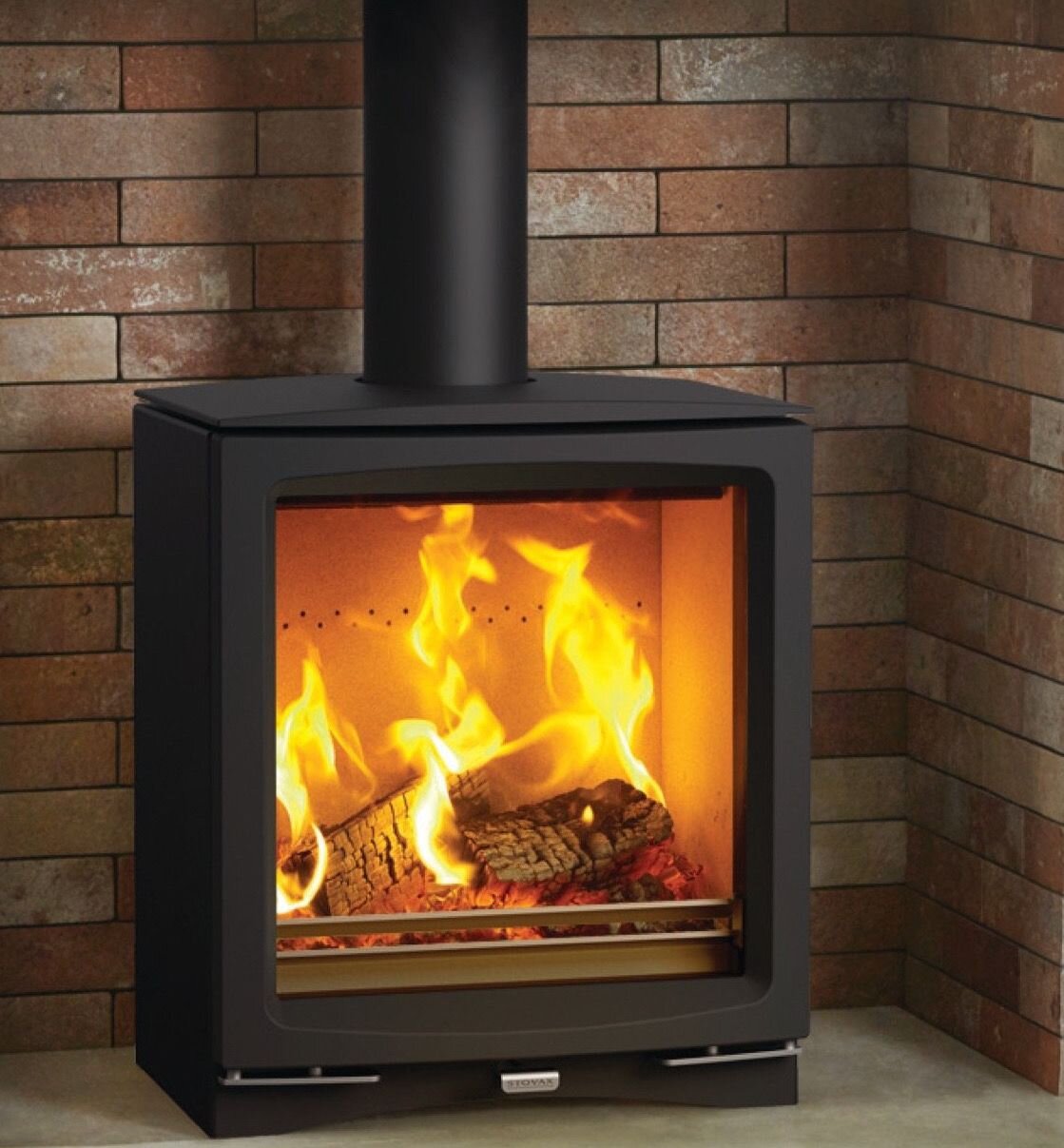Stoves
Stoves are popular heating solutions in the UK due to their energy efficiency and aesthetic appeal. When selecting a stove, it's important to consider factors such as your home's heating requirements, safety regulations, and proper installation and maintenance.
What are the benefits of a stove over an open fire?
There are several benefits of a wood-burning stove over an open fire, including:
Increased efficiency: Wood-burning stoves are much more efficient at converting the heat from burning wood into useful heat for your home. They typically have a closed design that allows for better control of the airflow, resulting in less heat being lost up the chimney.
Safety: Wood-burning stoves are generally safer than open fires because they are enclosed and have a door that can be closed to prevent sparks and embers from escaping. They are also less likely to cause a chimney fire because they produce less creosote buildup.
Environmental impact: Wood-burning stoves produce less smoke and particulate matter than open fires, making them a better choice for the environment. They also use less wood, which reduces the impact on forests and the carbon footprint of your home heating.
Cost-effectiveness: Wood-burning stoves are typically more cost-effective than open fires because they use less wood to produce the same amount of heat. They also tend to last longer than open fires, meaning you will save money over time.
Aesthetics: Wood-burning stoves offer a cozy and charming focal point for your home, and they come in a variety of styles to suit your décor. Unlike an open fire, they can also be easily controlled to provide the desired amount of heat and ambiance.
What Types of fuel can be used in a stove?
In the UK, wood-burning stoves can burn a variety of fuels, including:
Seasoned wood: Dry and well-seasoned wood is the best fuel for wood-burning stoves. It burns cleanly and efficiently and produces little ash.
Smokeless fuel: Smokeless fuels are specially designed for use in smoke control areas, where the use of wood and other solid fuels is restricted. These fuels are typically made from anthracite coal, coke, or a blend of both.
Kiln-dried logs: These are dried in a kiln to reduce their moisture content and improve their burning efficiency. They are a good option for those who want to reduce the amount of smoke and particulate matter produced by their stove.
Pellets: Wood pellets are small, compressed pieces of wood that burn cleanly and efficiently. They are a good option for those who want to reduce their carbon footprint, as they are made from sustainably sourced wood and produce low emissions.
It is important to note that not all fuels are suitable for all stoves, and some stoves may have specific fuel requirements. Always check the manufacturer's recommendations before using a new type of fuel in your stove.
Are stoves better for the environment than central heating?
Stoves and central heating systems have different environmental impacts, and it depends on a range of factors when comparing the two. In the UK, the environmental impact of both stoves and central heating systems is an important consideration due to the UK's commitment to reducing carbon emissions.
Stoves:
Renewable fuel: Stoves can be fueled by renewable sources of wood, which can be more environmentally friendly than non-renewable sources of fuel such as gas or oil.
Localized heat: Stoves provide localized heat, which can be more efficient than central heating systems that heat the entire home. This can result in lower energy consumption and lower carbon emissions.
Carbon-neutral: When using sustainably sourced wood as fuel, stoves can be carbon-neutral, as the carbon released when burning wood is balanced by the carbon absorbed during the growth of new trees.
Proper maintenance of your stove is important to ensure it continues to operate safely and efficiently. Here are some tips on how to maintain your stove:
Clean the stove regularly: Remove ash and other debris from the firebox and ash pan after each use. Use a soft brush to clean the stove's exterior and glass door.
Check the chimney: Check the chimney for any blockages or build-up of creosote, which can increase the risk of a chimney fire. Hire a professional chimney sweep to clean the chimney at least once a year. (NACS/HETA registered)
Check the gaskets: Check the gaskets around the door and glass to ensure they are tight and not cracked. Replace any damaged gaskets to prevent heat loss.
Check the stovepipe: Check the stovepipe for any leaks or damage. Replace any damaged sections of the stovepipe to prevent carbon monoxide leaks.
Check the stove's air intake: Ensure the stove's air intake is not blocked and adjust it as necessary to control the fire.
Use the right fuel: Only burn fuels that are recommended for your stove. Burning unsuitable fuels can damage the stove and increase the risk of a fire.
Have the stove inspected: Have your stove inspected by a professional every few years to ensure it is operating safely and efficiently.
How do I properly maintain my stove?
In the UK, although it is not a legal requirement to install a flue liner when fitting a stove there are several benefits to installing a flue liner when fitting a stove, including:
Increased safety: A flue liner can protect against chimney fires by preventing heat and sparks from coming into contact with the chimney walls.
Improved efficiency: A flue liner can help to improve the efficiency of your stove by reducing the amount of heat lost through the chimney.
Easier maintenance: A flue liner can make it easier to clean your chimney, as it creates a smooth surface that is easier to access and clean.
It is important to have a qualified and registered installer fit your stove and flue liner to ensure the safety and efficiency of the installation.
Will I need a liner for a stove to be fitted?
Before installing a stove, it is important to ensure that your chimney is suitable. Here are some factors to consider when determining whether your chimney is suitable for a stove in the UK:
Type of chimney: Stoves can be installed in masonry chimneys, pre-fabricated chimneys, and twin-walled insulated chimneys. Masonry chimneys are the most common type of chimney in the UK and are suitable for most stoves. Pre-fabricated and twin-walled insulated chimneys are suitable for certain types of stoves, but it is important to check the manufacturer's recommendations before installing.
Size of chimney: The size of your chimney will determine the size of stove that can be installed. The chimney should be at least the same size as the flue collar on the stove. A smaller chimney can cause drafting issues and lead to a build-up of creosote.
Condition of chimney: The chimney should be in good condition and free of any cracks, leaks, or damage. It should also be free of any blockages or debris. Hire a professional chimney sweep to inspect the chimney and clean and test it if necessary.
Location of chimney: The location of the chimney should be suitable for the installation of a stove. It should be accessible and located in an area where the stove can be vented safely.
Compliance with regulations: Ensure that the installation of the stove complies with building regulations and any local authority requirements.
We at A1 Chimney Sweeps can determine whether your chimney is suitable for a stove.
How do I know if my chimney is suitable for a stove?

